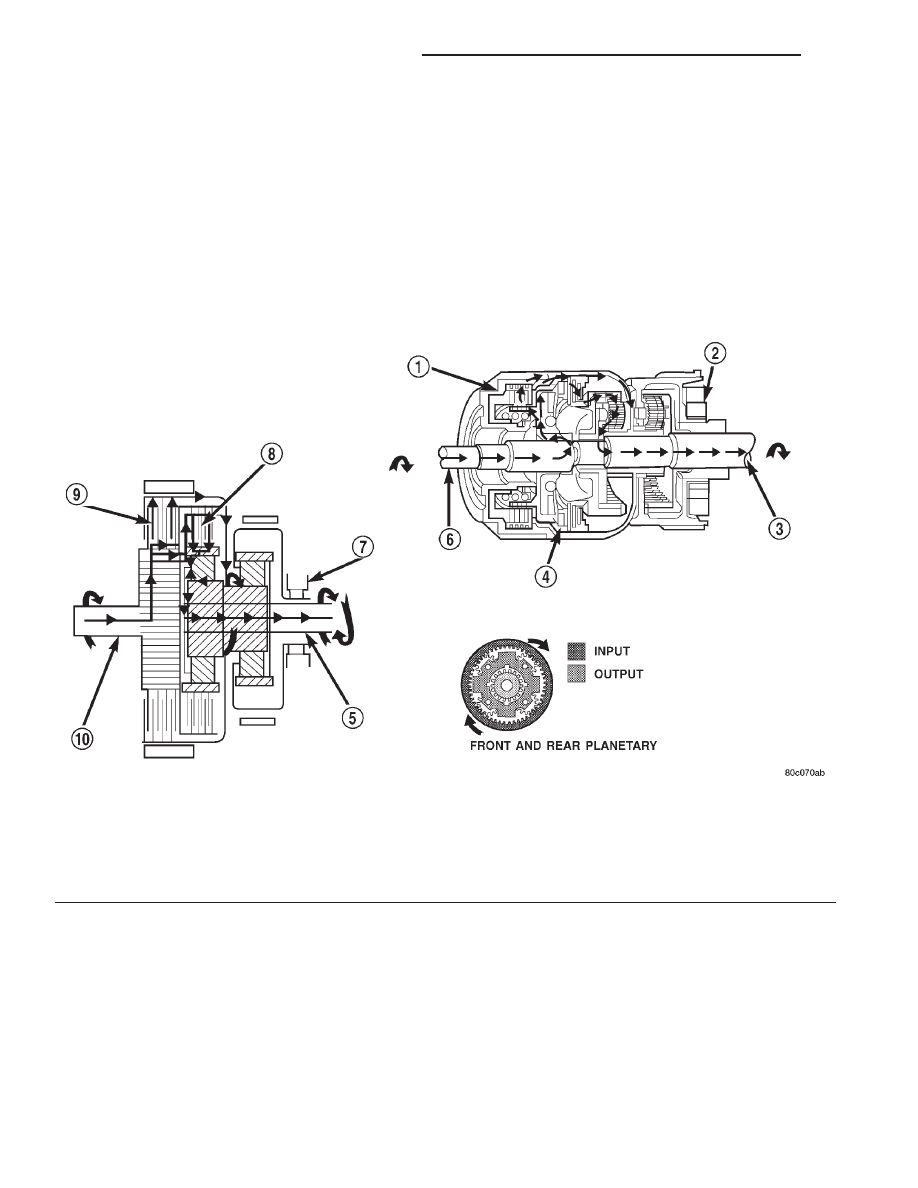Dodge Dakota (R1). Manual - part 655

DIRECT DRIVE POWERFLOW
The vehicle has accelerated and reached the shift
point for the 2-3 upshift into direct drive (Fig. 8).
When the shift takes place, the front band is
released, and the front clutch is applied. The rear
clutch stays applied as it has been in all the forward
gears. With the front clutch now applied, engine
torque is now on the front clutch retainer, which is
locked to the sun gear driving shell. This means that
the sun gear is now turning in engine rotation (clock-
wise) and at engine speed. The rear clutch is still
applied so engine torque is also still on the front
annulus gear. If two members of the same planetary
set are driven, direct drive results. Therefore, when
two members are rotating at the same speed and in
the same direction, it is the same as being locked up.
The rear planetary set is also locked up, given the
sun gear is still the input, and the rear annulus gear
must turn with the output shaft. Both gears are
turning in the same direction and at the same speed.
The front and rear planet pinions do not turn at all
in direct drive. The only rotation is the input from
the engine to the connected parts, which are acting
as one common unit, to the output shaft.
Fig. 8 Direct Drive Powerflow
1 - FRONT CLUTCH APPLIED
6 - INPUT SHAFT
2 - OVER-RUNNING CLUTCH FREE-WHEELING
7 - OVER-RUNNING CLUTCH FREE-WHEELING
3 - OUTPUT SHAFT
8 - REAR CLUTCH APPLIED
4 - REAR CLUTCH APPLIED
9 - FRONT CLUTCH APPLIED
5 - OUTPUT SHAFT
10 - INPUT SHAFT
21 - 264
AUTOMATIC TRANSMISSION - 46RE
AN
AUTOMATIC TRANSMISSION - 46RE (Continued)